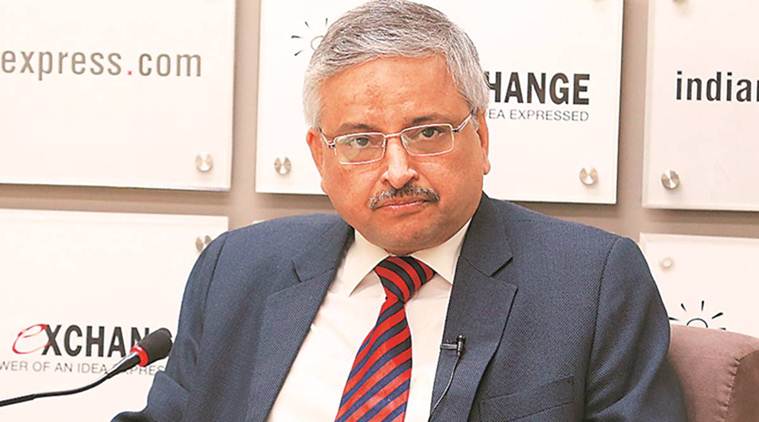 AIIMS director Dr Randeep Guleria. (File)
AIIMS director Dr Randeep Guleria. (File)
AIIMS Director Dr Randeep Guleria, who is part of the core team monitoring the pandemic in India, has told The Indian Express that data from the national capital suggests that the Covid curve is flattening and the city “may have crossed the peak”.
On Monday, Delhi reported 954 cases — the first time in weeks that the daily tally has dipped below 1,000. This takes the total number of confirmed cases to 1,23,747. The number of active cases is 15,166.
“If you look at the data from Delhi, it does suggest that we seem to have flattened the curve and, maybe, are showing a downward trend. So, it is possible that we have crossed the peak as far as Delhi is concerned. But, considering the trend in other cities and even in the US, having crossed the peak doesn’t mean that you can let your guard down. We still need to be very careful. If you start decreasing social distancing and mask-wearing, there can be a resurgence of cases and you may have another spike,” Guleria, the country’s top pulmonologist, told The Indian Express.
“The infection has not gone away totally, but it has come down. We have to continue to sustain (this) by following social distancing, wearing masks, and close surveillance so that if there is a small cluster developing somewhere, it does not become an area of spread. All those measures which are being followed need to be aggressively followed even in the coming weeks so that we don’t see a resurgence of cases,” he said.
“If there is a continued downward trend for another two weeks, it will mean a dip for almost four weeks. Normally, we would say that when you have a downward trend for more than 28 days, which is two incubation periods, considering the current infection rate, it is unlikely to spread further. There are two riders. One, that we need to keep it under strict control and people need to be sincere in maintaining measures. Second, in containment zones, aggressive action is required and no leakage happens,” he said.
Guleria was part of the high-level committee formed by the Ministry of Home Affairs to augment the capital’s infrastructure and medical services when daily cases were at their peak.
“Delhi was not doing very well a few weeks ago, but we have now shown good improvement. We are now in a better place. If we look at the beds that are available, the occupancy rate has come down significantly compared to the numbers four weeks ago. Even at AIIMS, there was a time when we had 800-1,000 patients admitted and as a panic reaction, we increased the number of beds for Covid to 1,500. But now, the trend has come down and gradually from 800 beds, we have come down to 400-500 beds. This is almost 50% of what we had four weeks ago. I think that is a positive sign as it also signifies that the number of patients requiring oxygen and ventilators is showing a downward trend. Not only in absolute numbers, but the number of patients who are requiring critical care also seems to have come down. Therefore, we are in a better position,” he said.
According to data uploaded by hospitals on the Delhi government’s Covid application, of the total 15,461 Covid-19 beds in government and private hospitals, 11,976 are lying vacant. Of the 1,178 ICU beds with ventilators, 456 are occupied.
“The most important parameter of looking at any virus is the mortality rate, which will matter in the long run. We are trying very hard to bring our mortality rate down to 1% and I am hopeful that it will happen with the aggressive treatment strategies that we have. We have also learnt a lot over the last five-six months on how to treat better. When we started, we were using different strategies because we did not know much about the virus. Now we know a lot about its coagulation and we give anticoagulation, the fact that steroids are helpful, the importance of giving oxygen — all of this has helped to decrease mortality,” said Guleria.
“But having said that, we still need to be very aggressive because we don’t have an effective antiviral drug. We have certain drugs, but none of them have shown to be the most efficient antiviral drug, and we are still months away from a vaccine. The strategy will be to try and decrease mortality with better care. Also, try and decrease the spread of infection as much as possible,” he said.
“I do agree that as the cases come down, and we are getting more confident that this is the trend which is sustainable, we should start focussing on increasing non-Covid care, and that is something which should be done both in the government and private sector. I am sure that the government will also support it,” he said.
“We have to balance it out so that we don’t reach a situation that we opened up and there was a spurt in cases, as happened in some cities in the south. Therefore, it has to be done in a graded manner, so that we are able to provide good care to non-Covid patients, but are ready for any surge as far as Covid patients are concerned… In this era of Covid-19 pandemic, we should not forget our non-Covid patients, and should provide them as much care as we can,” he said.
Guleria also said that there wasn’t much evidence of community transmission at the national level.